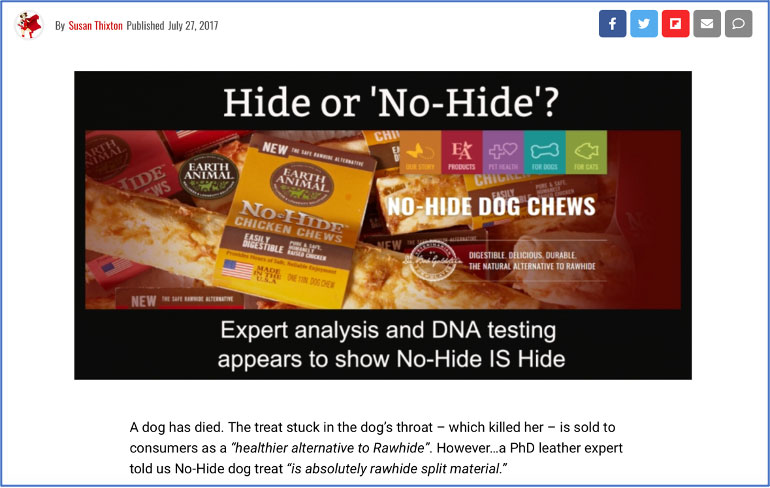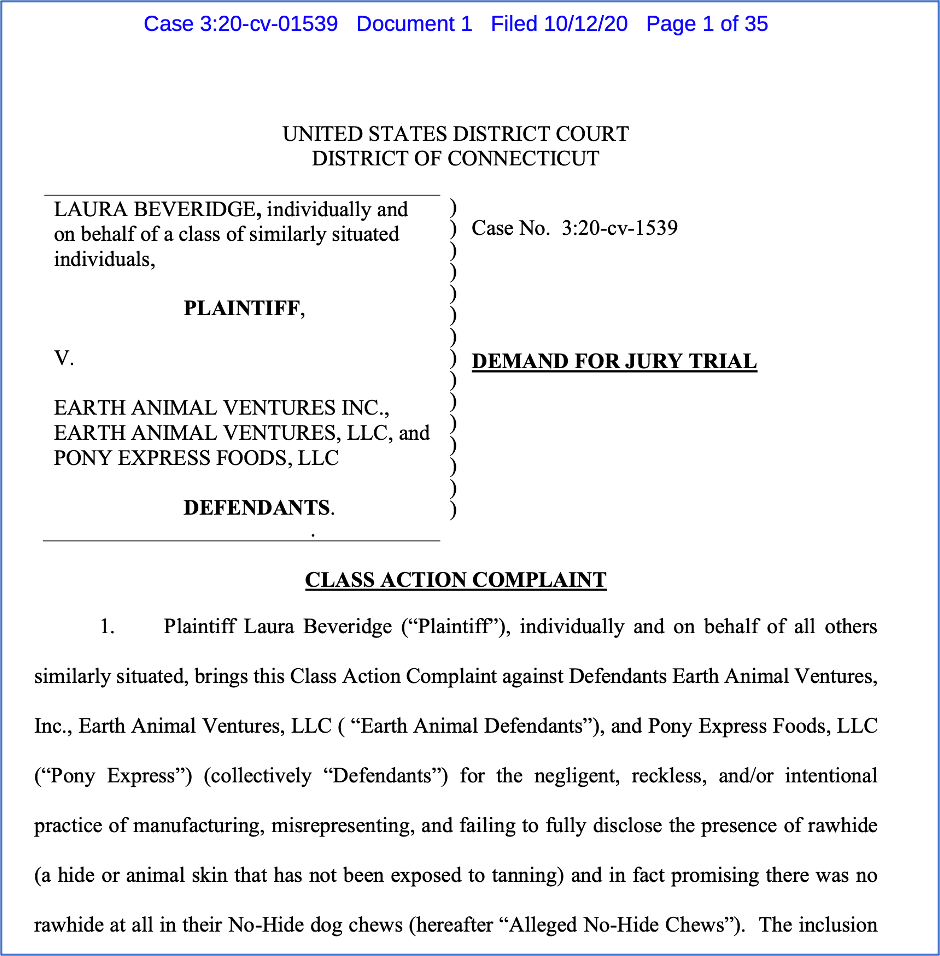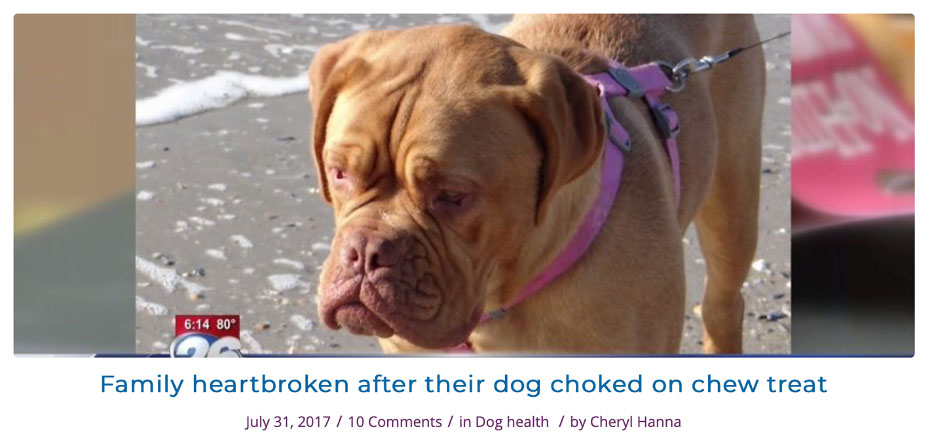The Big Miss: Is No-Hide® Actually Rawhide?
This article was written for Undogmatic Inc. by Nicole Cammack and was initially published on Undogmatic Inc’s website.
I’ll warn you now – this is one of my longer pieces, which is necessary to discuss the totality of the situation and to represent all points without omission of key facts. To date it appears that all of this information has not been compiled in one place before – meaning that both consumers and retailers have the odds stacked against them since they would need to do a significant amount of research and know where to look to get an accurate picture. I have provided links and figures to all references below. It is also important to note that I am not advocating for or against any of the involved parties – instead I’m presenting the facts for what they are so you can make your own decision.
A ‘consumer advocate’ recently stirred up drama from July 2017 re-circulating an article (figure 1) claiming that Earth Animal No-Hide® treats were rawhide, again. This was on the heels of the announcement of a class-action lawsuit (figure 2) against Earth Animal Ventures (EAV) questioning the ingredients and sourcing of No-Hide® products. I didn’t think I would have to address this issue, but apparently, I do since misinformation and cherry-picked information from the original chain of events keeps circulating (if it’s on the internet it must be true, right?). Consumers and retailers alike need to see the situation for what it is, so I’ll also write this from both a retailer and consumer standpoint to provide the level of transparency I hold others to. As you read this, you’ll understand that both sides have significant issues. In fact, No-Hide® being (or not being) rawhide is hardly the issue. Instead there is a pervasive lack of transparency and misinformation from both the consumer advocate side and EAV.
The background:
In July 2017 reports (figure 3) surfaced after a large breed dog died after choking on a No-Hide® chew without direct supervision. Some of the reports omit the fact that the over 100lb dog was given a 4in. No-Hide® chew which is not an appropriately sized chew-treat for that size dog. There is some discussion about whether the dog was left alone, or the dog walked away from the owner while she was on a conference call. Ultimately it is irrelevant – because the dog was unattended, even if by accident, at the time of the incident. This resulted in the small chew becoming lodged which led to respiratory complications where the dog, unfortunately, passed away. This is an unfortunate incident that also could happen to ANY one of us as pet owners. That said, it is important to note that ALL pet food, treats and toys can become a choking hazard for any pet – especially when left unattended whether intentional or not. It is the pet owner’s responsibility to know their pet, their chewing habits, provide appropriately sized treats and to monitor their pets while eating, playing and chewing products that may pose a risk.
The industry seems to be focused on the question, “Are No-Hides® rawhide?” when in reality there are a lot of other questions that need answering because it’s rather a complex situation. At the same time, the ‘science’ being used to persuade consumers and retailers that No-Hides™ are rawhide is not real science. Unfortunately, it looks convincing to those who don’t know what they are looking at and those circulating this info know that. In other words, they are knowingly taking advantage of people who don’t know any better which would mean they are intentionally misleading the consumer. It’s always important to remember that just because it looks like science doesn’t mean it is. In this article we’ll discuss multiple examples of why that is.
Regardless, this incident prompted several concerned parties to question the safety of these products as well as the ingredients making up these chews. These are logical questions, both of which deserved to be asked and investigated. Several other questions could be posed, which I’ll expand upon later. That said, the question of the safety and ingredients within No-Hide® chews were examined by 3rd parties using unvalidated and unaccepted ‘scientific’ methods. Those who conducted these investigations knew this and chose to take advantage of consumers and use it to paint an inaccurate picture to those who didn’t know better.
Just because it looks like science…
Later that month (October 2017), consumer advocate Susan Thixton publishes an article citing evidence that ‘claims’ that No-Hides® are rawhide (figure 1). Two major issues here: a leather chemist, Waldo Kallenberger, Ph.D. had analyzed a No-Hide via ‘microscopy’ to ‘verify’ that No-Hides® are rawhide even though this is NOT a validated and accepted scientific method (e.g. fake science). Besides, the chicken flesh and collagen ingredients contained within the product would likely explain his conclusion. However, the products were never sent out for formal laboratory analysis – so his findings are simply a guess based on visual observation and personal opinion. Simply said – this means nothing and does not prove or disprove that No-Hides® are rawhide. However – as a consumer or retailer that doesn’t know any better this sounds like damning evidence from a legitimate source.
Important to note is that Dr. Kallenberger is a leather chemist – not a food scientist, animal nutritionist or otherwise contributor or scientist in the field. This is a significant issue since these points are being positioned as pieces of ‘evidence’ to convince the public that No-Hides® are rawhide. The use of ‘fake science’ is another example of taking advantage of people who otherwise don’t know any better.
Rawhide v. No-Hide® soaked in water:
Water alone does not dissolve or digest ingredients. Solutes (such as salt or sugar) CAN dissolve in water, but this is not known as digestion – rather it indicates the substance is soluble. That said, simply soaking No-Hide® in water and comparing it to soaked rawhide (both of which swell and take on moisture) tells us nothing – and this is not science that proves or disproves the presence or rawhide. This is essentially mimicking what happened within the airway of the dog that passed away. Although saliva was present, the enzymes contained with saliva are not alone responsible or capable of breaking down most material. It makes sense that the No-Hide® behaved the way that it did since it is a dry treat that was exposed to moisture. Again, looks convincing if you don’t know what you are looking at – but is not an accepted method to make any conclusions as to the makeup of No-Hide®, or any food substance for that matter.
Terminology & context matter:
Further a DNA analysis (figure 4) was used to show that ‘beef’ was in salmon No-Hide® chews. Again, this sounds as if it may be convincing evidence that No-Hide® may be rawhide. However, here is where knowing two very important definitions are critical to understanding the totality of circumstances:
- Qualitative – relating to, measuring, or measured by the quality of something rather than its quantity (e.g. does not measure the percentage of substance that makes up the whole).
- Quantitative – relating to, measuring, or measured by the quantity of something rather than its quality.
Simply said, just because a substance is detected from a qualitative analysis does not indicate that the item is made entirely of that substance, it just means that that substance was detected. By now most retailers are aware that No-Hides® are made in a facility, and on the same equipment that processes beef, chicken, pork, salmon, venison and peanut butter – therefore cross-contamination is inevitable. Because of this it makes logical sense that beef was detected in the salmon product, but the way it is being portrayed is misleading to consumers and retailers who otherwise are not experienced in the sciences to be able to tell the difference.
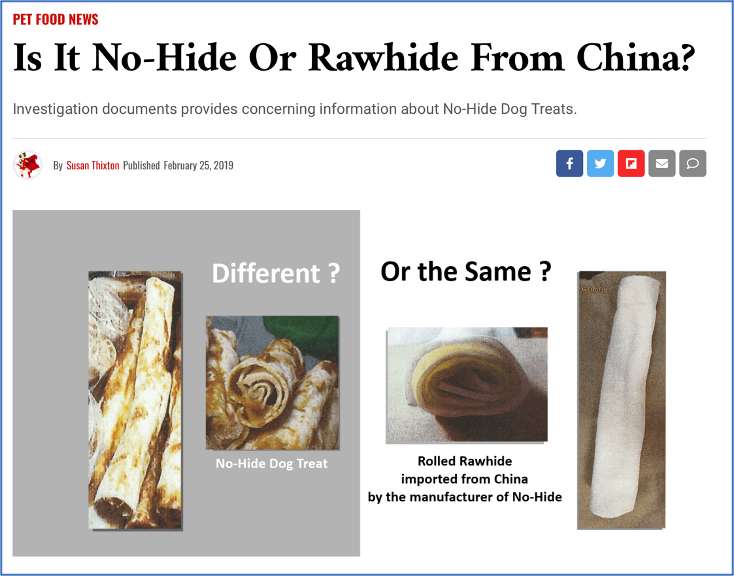
Figure 5: Date Accessed: October 19th, 2020. https://truthaboutpetfood.com/is-it-no-hide-or-rawhide-from-china/
What does the real science say?
While there is always room for more research and investigation, the following points were found in an independent investigation into the composition of No-Hide® products. There are several points within this report which I highly recommend you examine for yourself. However, the main ones are as follows; the presence of rice DNA was confirmed, which is not a constituent of rawhide. It is also made abundantly clear that Dr. Kallenberger was unaware that No-Hide® products were coated with animal protein (e.g. chicken, beef pork etc.), nor did he send out the product(s) in question for formal laboratory analysis as discussed earlier. Formaldehyde was also NOT found within the No-Hide® products. This is significant since formaldehyde is a known constituent of rawhide, this also suggests that the No-Hides® are not rawhide.

Figure 6: Date Accessed: October 19th, 2020. https://truthaboutpetfood.com/is-no-hide-dog-treat-actually-hide/
Interestingly, the results of the aforementioned investigation have a link within an article (figure 5) on Susan Thixton’s site – yet there is critical information that is conveniently omitted in articles detailing her interpretation and conclusion. For example, in referring to the Salmon No-Hide® product she states that, “DNA analysis found the majority of the product analyzed as “Bos taurus” – beef”(figure 6). The problem is that the link to the report (figure 4) she provides to back up this claim is a qualitative (not quantitative as she suggests) test – it does not measure the amount of beef DNA present, only that it was present. Misleading to the public and consumers? You bet. Unfortunately, consumers trusted her conclusion and did not click the link to verify her conclusion. If they did, they may have picked up on this – another reason why it is so important to do your own homework!
Further testing & validation
After the initial article published questioning the ingredients in No-Hide® a 2017 independent investigation suggested that No-Hides™ be further studied via laboratory analysis. Dr. Jerry Ritchey, DVM, Ph.D., Dipl. ACVP is a board-certified pathologist who reviewed the histological differences (figure 7) between both rawhide and No-Hide™ chews which showed significant and obvious differences (you can review this via the link provided). These facts indicate that No-Hide® products are not rawhide material. It’s also important to note that Dr. Ritchey, a pathologist, is by default much more qualified to make determinations on the makeup of the No-Hide® than Dr. Kallenberger, a leather chemist. These results were made publicly available for you to review. That considered, why didn’t the questioning parties have the No-Hides® evaluated by a pathologist in the first place? Is it because the results would not have fit their narrative? It’s likely.
The company which manufactures No-Hide® also imports rawhide from China
Articles (figures 1,3 & 5) circulating also focus on the fact that there is rawhide imported onto the same property which also is home to the No-Hide® manufacturing facility. This however is not a secret or something EAV has denied.
It is not surprising that the rawhide products look similar to the No-Hides® in shape and size, but again that is not proof that they are rawhide. There are several experts, along with the FDA and PA Dept. of Agriculture who have visited and inspected the Pony Express facility to observe the No-Hide® manufacturing process and have indicated that the process does not involve rawhide, nor does rawhide enter the building in which No-Hides® are made.
These facts aside, one could argue that since EAV positions themselves as an ethical company with a focus on transparency and animal welfare it is less than desirable for them to utilize and support a facility and company that imports rawhide from China for animal consumption in the U.S. Again, these are some questions and considerations that may matter to some pet owners, retailers, and veterinarians – but not all. This is something you must determine for yourself.
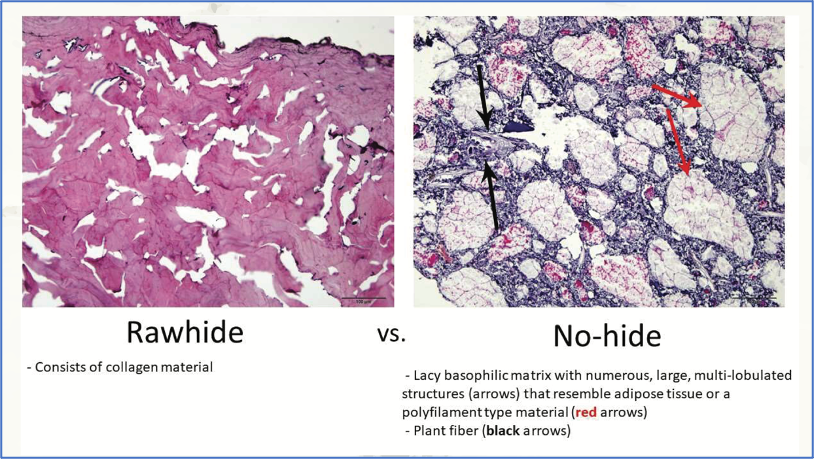
Figure 7: Date accessed: October 19th, 2020. https://cdn.shopify.com/s/files/1/0201/2178/0324/files/No_Hiding_the_Truth_About_No-Hides-2020.pdf?fbclid=IwAR2xlEtTD5NOhIALzI4risCcNvfzO_jTqEG2u5srrRmuyaDzNueLf0N7Sr0
FDA and Pennsylvania Department of Agriculture investigations
In 2018 multiple visits were made to the No-Hide® manufacturing facility to review the manufacturing process. This involved inspection of records, procedures, raw ingredients, invoices and the manufacturing process. Articles distributed currently seem to suggest that this was not the case – when these investigations were closed with “no action indicated” (figure 8).
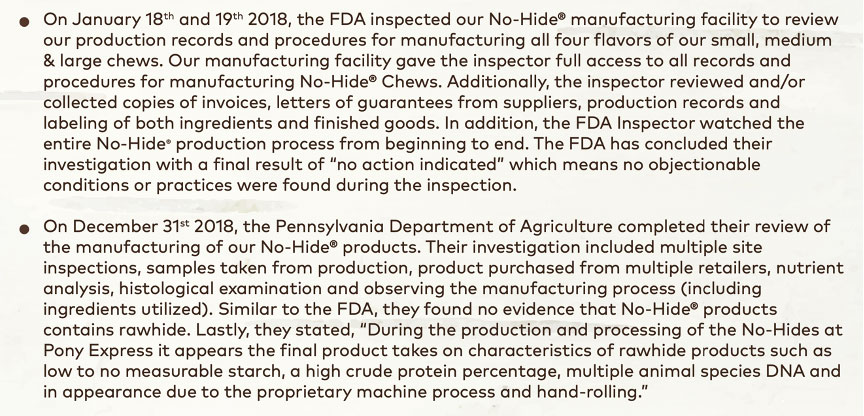
Figure 8: Date Accessed: October 19th, 2020. https://cdn.shopify.com/s/files/1/0201/2178/0324/files/No_Hiding_the_Truth_About_No-Hides-2020.pdf
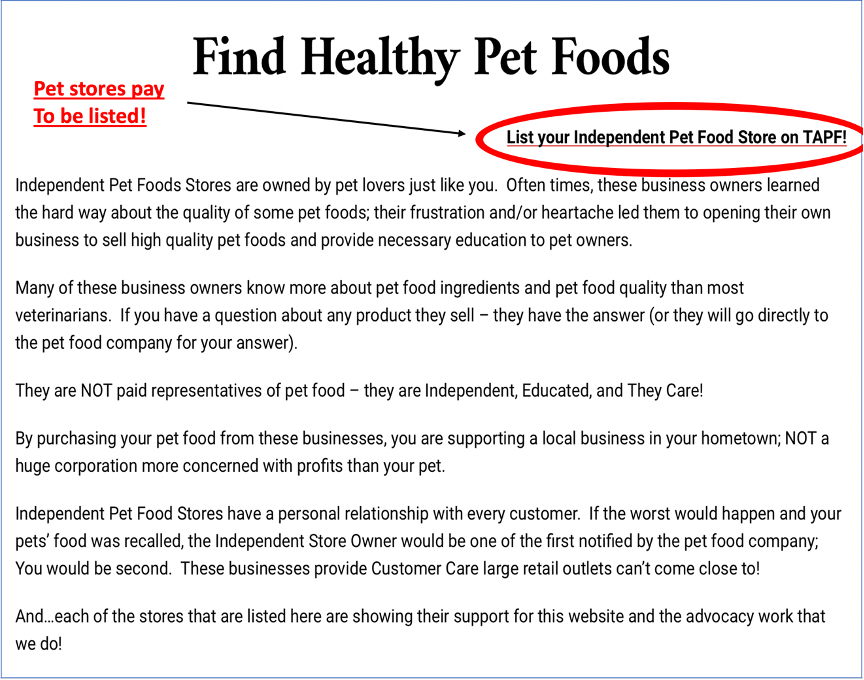
Figure 9: Date Accessed: October 19th, 2020. https://truthaboutpetfood.com/find-healthy-pet-foods/
I would question what Susan Thixton’s true motive is in this investigation. It would appear that digging up old wounds because she didn’t like the answer she was given is not doing retailers and consumers any favors since it doesn’t fix the underlying issue at hand. Further, claims that she is advocating for independent pet stores (figure 9) who do their best to educate consumers and stock quality products. How is she helping independents by creating another battle for them to fight? The ENTIRE industry seems to forget that the independent retailer is left on the front lines fighting everyone’s battle.
Manufacturers and consumer advocates can create a storm of upset consumers who then turn to the retailer blaming them for stocking, selling and recommending products. While I DO believe that retailers should be held accountable for the standards, they set for themselves – I don’t believe that retailers should be left to fight battles that manufacturers create due to negligence (Vitamin D, Aflatoxins and Dilated Cardiomyopathy). Nor do I believe that retailers should have to fight a battle that is based on a misinformation, or incomplete information campaign from ‘consumer advocates.’ It would have been easier and more respectable for her to just admit that she was wrong, or that she didn’t know. She could be advocating for relevant topics that could actually make a significant industry difference rather than keep bringing up old wounds to stay relevant.
What EVERYONE is missing:
These points considered I am not advocating for or arguing against the use of No-Hide® in pets. I do understand and respect that each pet owner has their own set of standards that they apply to the products they use with their pets, and the same applies to retail store owners. I also believe that there are strengths and weaknesses apply to nearly every product on the market – and those strengths and weaknesses further depend on the individuality of the animal and situation at hand. Ultimately my job is to help educate others, so they are empowered to make their own decisions.
The big miss from the industry is that the noise from the No-Hide® Class Action Lawsuit (figure 2) actually does a disservice to the pet industry because it overshadows other critically important issues that we SHOULD be focusing on instead. For example, does EAV provide us with the country of origin for each of their ingredients? Are they testing for the adequacy/safety of their raw ingredients? Are their treats truly digestible? Have they repeated digestibility studies for all flavors, and since the ingredient update? These questions are not specific to EAV because most companies leave a lot to be desired in terms of real and transparent data.
So, is the industry as transparent as they claim to be, or is this just another example of why it is so important to ask questions? It would have been nice if consumer advocates advocated for change and transparency that actually prevented the pervasive safety issues and lack of transparency we see today. Sure, ingredient sourcing is nice to know – however what about product safety for contaminants, accuracy, and pathogens? What about nutritional validation? What about digestibility? What about ensuring pet foods were formulated by someone qualified (e.g. not a livestock nutritionist)? These questions go a lot further to improving the quality of products on the market.
Ingredient challenges, changes and testing?
One fact to note is that at the time these experts visited the facility they were using gelatin in the No-Hide™ manufacturing process. Gelatin is a collagen is an animal-based protein that can be used as a binder, especially in pet treats. Since that time EAV has replaced the use of ‘gelatin’ with ‘agar-agar’. ‘Agar-agar’ is a plant-based substance that is used as a substitute for gelatin which is made from red algae-based seaweed per the USDA. In other words, the product at the time of the 2017 incident and 2018 investigations was a different product than what is on the market today.
To my knowledge EAV has not provided any public analysis of all ingredients, or a country of origin for all ingredients, only some. This does leave doors open questioning where ingredients in No-Hides® come from. It’s also important to note that the original gelatin source was not named in the original formula (e.g. chicken, beef etc.) meaning it could have changed periodically based on cost and/or sourcing. Again – a consumer, retailer and/or veterinarian should not have to request this information – it should have been publicly available without barrier.
Further, have digestibility tests been repeated since the ingredient change from gelatin to agar-agar? Based on information available on their website it would appear that the answer is no. In addition to that, were consumers and retailers formally notified of the formula change for No-Hide®? When exactly did that change take place?
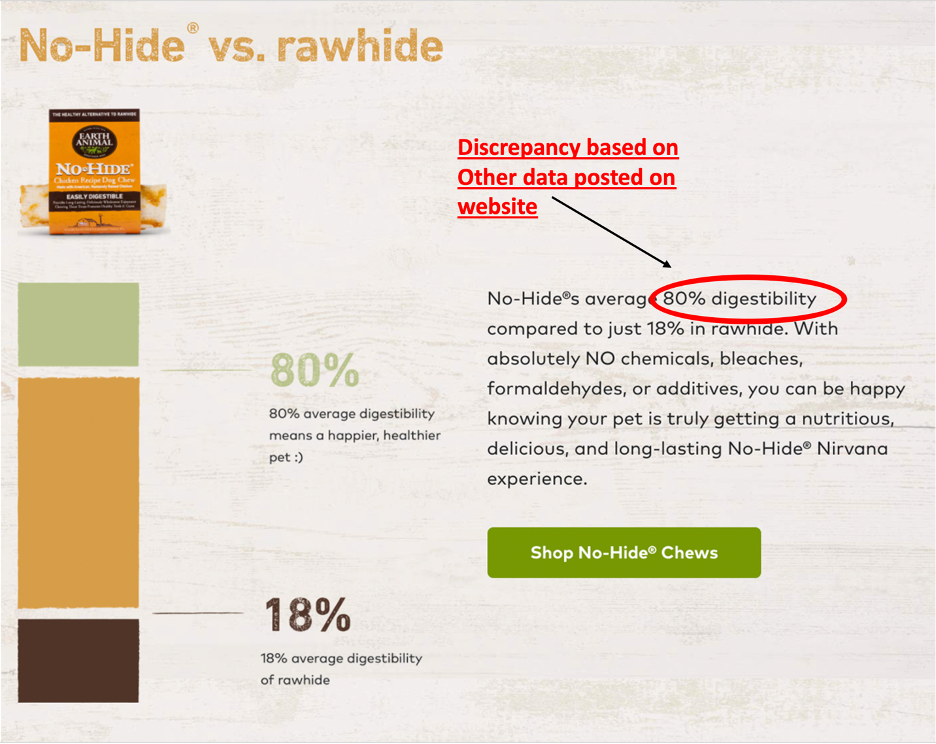
Figure 10: Date Accessed: October 18th, 2020. https://www.earthanimal.com/our-products/no-hide-wholesome-chews
In vitro digestibility ‘study’ questions
EAV does claim that their No-Hides® are 80% digestible, although information their website seems to suggest otherwise. From the two screenshots below from EAV website we can see digestibility claimed at 80% and 56% – this is a significant difference (figures 10 & 11). Was the digestibility decreased when gelatin was replaced with agar-agar? Or was the digestibility testing not repeated at all? I would also argue that a digestibility of 56% does not support the claim of the product being ‘nutritious’. Regardless, it does not appear that EAV has enough data on the digestibility of No-Hides® to claim ‘average’ digestibility.
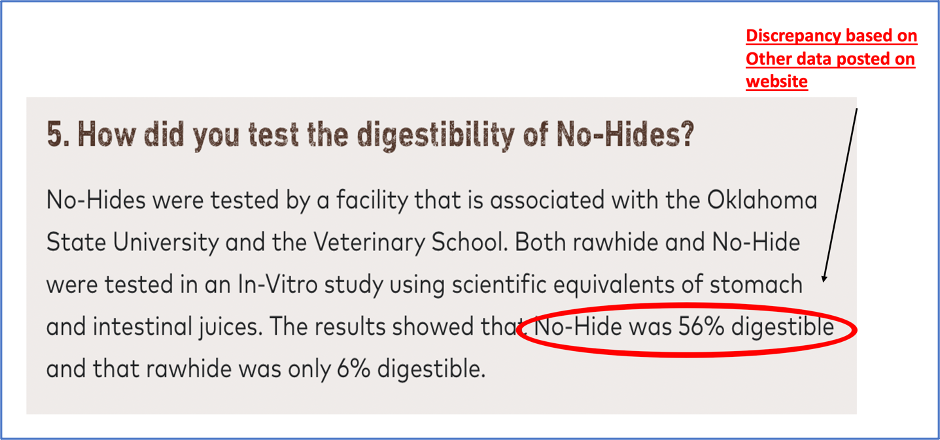
Figure 11: Date Accessed: October 18th, 2020. https://shop.earthanimal.com/pages/no-hide-faq#question5
That said, this laboratory test EAV utilized is known as in vitro, and is not indicative of true digestibility. Instead, in vitro digestibility consists of two phases, a gastric and intestinal phase to help verify product safety and potential for digestion.1 In vitro studies take place in a test tube, or elsewhere outside a living organism. In vitro testing is a highly controlled environment which means that variables such as temperature, pH, enzymes, and other influences are not necessarily representative of how the food may be ingested or metabolized in dogs. In short, why is this method claimed to prove digestibility in canines (in vivo) when in vitro doesn’t validate actual digestibility in dogs? There is an obvious gap in information in the in vitro testing – so why haven’t steps been taken to fill those gaps with in vivo testing? If they followed up with a true in vivo digestibility study that may actually end the suspicion that many have.
One must also question whether this study has been reproduced, and for all flavors and versions of No-Hide®? Having digestibility data sounds good if you don’t know what you are looking for. But with digestibility ranging between 56% and 80% which is it? If it’s 56%, this is a much more significant issue since that means that just over 50% of the product is digestible which translates to a lot of waste (feces)! Interesting coming from a company that is invested in the Pet Sustainability Coalition which aims at reducing the environmental impact of the pet industry.
Taking it a step further – available literature cites a wide range of in vitro digestibility results for available pet treats. To put this into context, when tested in vitro, meat-based treats showed an average 41% digestibility within the gastric phase. Pig ears (made primarily of collagen and cartilage) showed approximately 14% digestibility. However, intestinal phase testing showed approximately 90% digestibility of all meat-based treats – including pig ears.1 Contrary to popular belief, rawhide does have varying levels of digestibility. Literature shows that digestibility can range from approximately 14-73%, based on the product.1 In short, this means that the ingredients, processing, and other factors can have a significant impact on digestibility – hence the need for full testing and transparency on all products.
These things considered – the digestibility can also be impacted by the animal’s tendency toward chewing products into small pieces or swallowing larger chunks. Therefore, in vitro testing does not offer any conclusive evidence into the actual digestibility of the product in vivo. In other words, once in vitro testing is conducted it should be followed up with in vivo testing to ensure safety and digestibility of the product in question.1
More incomplete information
EAV cites in vivo digestibility testing for their Wisdom® dog food, so why would they not conduct in vivo testing for their No-Hide® products as well? Based on the information available it would seem that this is another example of the industry not being as transparent as they claim to be. That considered, if you look into the data (figure 12) that EAV provides on the digestibility of their Wisdom® pet food, that is also not a validated method of determining digestibility, nor do they provide all the metrics for the consumer, retailer, or veterinarian to truly evaluate the food. Problem is that energy efficiency, the term EAV uses to describe Wisdom® digestibility is a livestock term use for average daily gain and feed: bodyweight conversion. Why do I mention this? Because it looks good if you don’t know what you are looking for – but in reality, it is meaningless and/or misleading.
Yet again, it underscores the reason it is so important for both consumers and retailers to ask the right questions when it comes to evaluating the transparency and adequacy of products on the market today. The right questions make it difficult for companies to evade answering the question. It also allows you to easily see when they are not giving the full answer or the right answer.
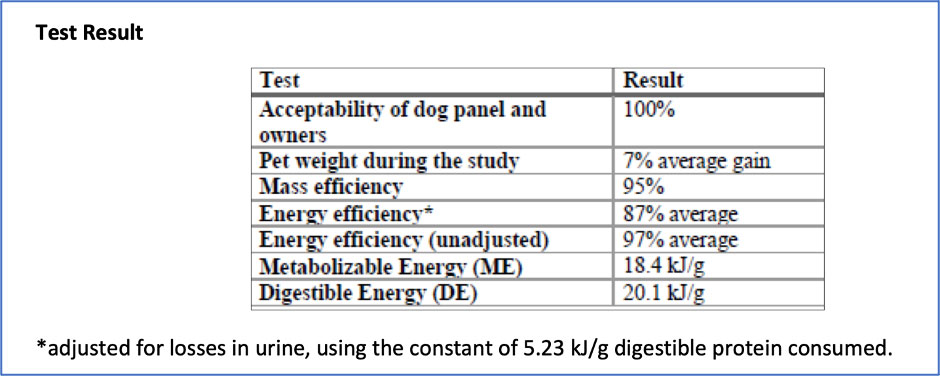
Figure 12: Date accessed: October 19th, 2020. https://cdn.shopify.com/s/files/1/0201/2178/0324/files/Digestibility_Report_Wisdom_Diet.pdf
In short, these digestibility tests should be formally conducted, and the results published on their website for both Wisdom® and No-Hide® products. A consumer, retailer and/or veterinarian should not have to request this information – it should be publicly available without barrier, confusion or manipulation. That is the definition and practice of transparency.
Lack of Transparency
Ultimately it is clear that EAV changed the source of gelatin from an unnamed animal source to agar-agar. However, it is unclear if EAV clearly communicated the change in formulas of No-Hide® products clearly with consumers, retailers and/or distribution and veterinary partners. While the ingredient decks are updated in the FAQ on their website, the lack of clear and direct communication underscores the need for greater transparency and accountability when it comes to communication such as this.
Further, on the Truth About Pet Food website, there are different reports indicating that No-Hides® may not be what they are claimed to be. These include reports and FOIA documents from the PennState laboratory, Illinois Veterinary Diagnostics Laboratory and PA Dept. of Agriculture (just to name a few). A full list of these documents can be found here (figure 13). From reviewing all of these documents what sews seeds of doubt is that several unvalidated methods and opinions that are used to compare results to validated methods – despite the fact that there are multiple people and agencies who have verified both the ingredients and process of making No-Hides®.
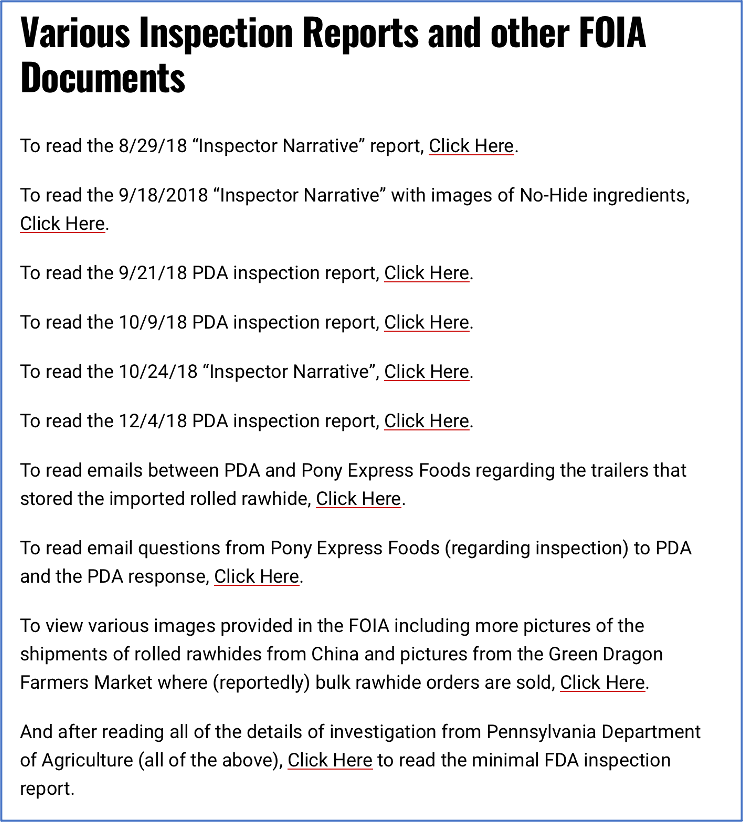
Figure 13: Date Accessed: October 19th, 2020. https://truthaboutpetfood.com/is-it-no-hide-or-rawhide-from-china/
In essence, the totality of circumstances underscores the necessity of companies to do their homework. Homework means conducting both digestibility and nutrient analysis studies alongside ingredient validation. These processes fill the knowledge gap that currently exists within animal nutrition and would have alleviated a lot of the questions behind these products.
Champion for Independent Retailers?
While most consumers won’t be concerned with this point – the retailers should be. EAV has always claimed to be a champion for the independent pet retail channel. Through the COVID-19 pandemic they pledged support at multiple times, as well as conducted and released information from a survey they conducted aimed at helping pet retailers better connect with pet owners. Essentially the survey found that independents had a reputation problem, which was the reason for declining sales and increasing online sales. Both EAV and a major distribution partner posed a call-to-action to unite and repair the independent pet reputation. However, since then we haven’t seen any tangible efforts from either of them toward this.
Further, in October 2020 we learned that EAV was to begin offering their No-Hide® products on Chewy.com – this hardly indicates support and loyalty to the independent retailers. In fact, it takes advantage of the disadvantage that they pledged to help repair.
Part of the recipe to supporting independent pet retailers involves offering independent channels protection against predatory practices that Chewy.com engages in. For example, they often undercut pricing to poach customers by offering products at prices lower than retailers can purchase from distribution, offering sales on short-dated (nearly expired) product, and/or geotargeting and geofencing independent pet stores. As an independent pet store who has been a supporter of EAV it saddens me that a fellow CT retailer (also Earth Animal) would support Chewy and their practices.
That said, this is another example as to why independent retailers should never lean into any one brand to the point where a recall, scandal or otherwise bad press could damage their business. While Chewy’s tactics, pricing and inventory used to concern me – I have found much more success in helping to educate my team, consumers and focusing on brands that meet the standards I have set for NorthPoint®. If you’re constantly going to chase Chewy’s products and pricing or put all your eggs in 1 or 2 baskets you’re continually going to lose and expose yourself to continued liability.
‘The Big Miss’
The renewed interest in this topic in 2020 does not bring up any new information or evidence to suggest that No-Hides® are rawhide. Instead, I believe that this is actually doing a disservice to retailers as they are being shielded from larger problems. For example, the fact that retailers are having to fight this battle for consumer education, and in the process, we will have our reputation eroded further. This erosion of reputation is largely due to manufacturers making unsubstantiated claims without adequate data to back up their products. It is also due to the majority of products on the market are lacking in data to support their safety and nutritional adequacy. In addition, we’re also missing that EAV essentially backtracked on their promise of being loyal to independent pet in both business and ethical standards. Based on these considerations there is not one ‘big miss’ – there are several – and it has nothing to do with No-Hides® being or not being rawhide. It’s up to independent retailers and consumers to determine how they are going to react and if that reaction is appropriate based on the totality of circumstances.
Regardless of what you believe – we can likely all agree on this: more research, transparency and accountability are needed in the pet industry.
de Godoy MRC, Vermillion R, Bauer LL, et al. In vitro disappearance characteristics of selected categories of commercially available dog treats. J Nutr Sci. 2014;3. doi:10.1017/jns.2014.40



